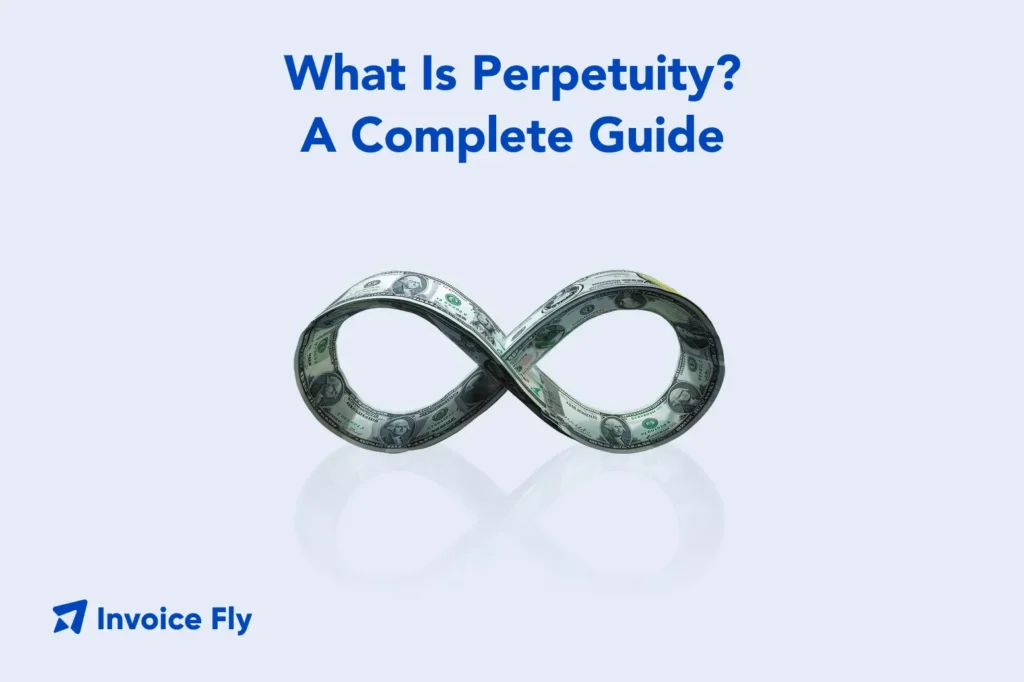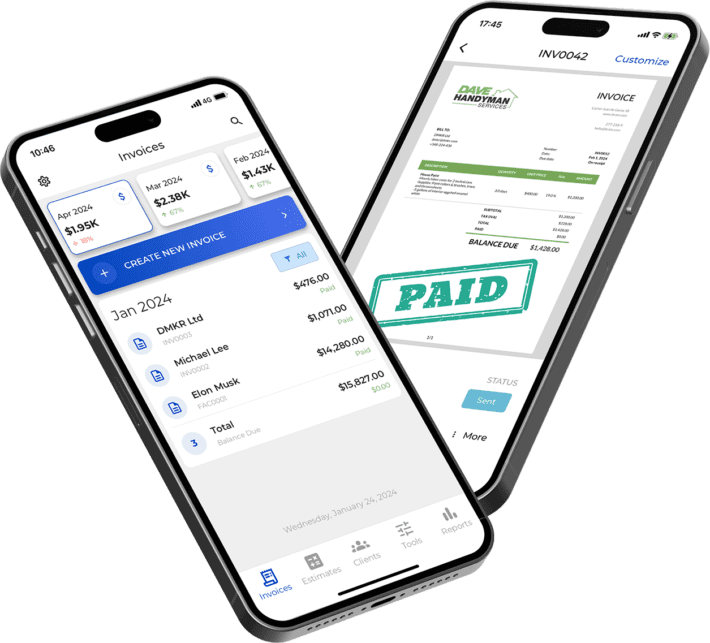What Is Perpetuity in Finance? Complete Guide with Examples

Table of Contents
A perpetuity is a financial concept that describes a stream of payments that continues forever—without an end date. In simple terms, imagine receiving the same amount of money every year for the rest of time. While that sounds theoretical, the idea of perpetuity plays a crucial role in finance, investing, and business valuation. It helps investors, analysts, and even small business owners estimate the present value of recurring cash flows that last indefinitely.
In this complete guide, you’ll learn what perpetuity means in finance, explore real-life examples, and discover how to calculate perpetuity present value using simple formulas and step-by-step explanations.
What Is Perpetuity?
In finance, a perpetuity is a type of investment or cash flow that pays a fixed amount at regular intervals forever. The word “perpetuity” comes from “perpetual,” meaning continuous or everlasting.
Imagine you invest $100,000 in a special bond that pays you $5,000 every year, and those payments never stop. That’s a perpetuity.
While true perpetuities are rare in real life, the concept is extremely useful for valuation purposes. Businesses use perpetuity calculations to estimate the value of companies, stocks, and long-term projects.
One real-world example is the British government bonds called “consols,” which were issued in the 18th century. These bonds paid interest forever without ever requiring repayment of the principal.

Why Perpetuity Matters in Finance
Understanding perpetuity is important for business valuation, investment analysis, and financial planning.
Business Valuation: Companies calculate their terminal value using a perpetuity formula, assuming the business will continue generating cash flow indefinitely.
Investment Decisions: Investors use perpetuity calculations to determine what they should pay for stocks that pay regular dividends.
Financial Modeling: Analysts rely on present value of perpetuity calculations when building models for mergers, acquisitions, and long-term projects.
Time Value of Money: The perpetuity concept shows that even though payments continue forever, their present value is finite because future dollars are worth less.For small business owners tracking finances through small business bookkeeping, understanding perpetuity helps when evaluating investments or recurring revenue streams.
Get Started with Invoice Fly’s Software
Invoice Fly is a smart, fast, and easy-to-use invoicing software designed for freelancers, contractors, and small business owners. Create and send invoices, track payments, and manage your business — all in one place.

Types of Perpetuity
There are two main types of perpetuity: constant perpetuity and growing perpetuity.
Constant Perpetuity
A constant perpetuity pays the same fixed amount forever. The payment never increases or decreases.
For example, if you receive $1,000 per year from an investment and that amount stays at $1,000 every single year indefinitely, you have a constant perpetuity.
This is simpler to calculate because the payment amount never changes. The formula only needs the fixed payment and the discount rate.
Growing Perpetuity
A growing perpetuity pays an amount that increases at a constant growth rate forever.
Consider a company that pays dividends. If a company pays a $2 dividend this year and increases it by 3% annually forever, that’s a growing perpetuity.
Growing perpetuities are commonly used in the dividend discount model because they account for companies that grow their payouts over time. According to the Corporate Finance Institute, growing perpetuity formulas are essential tools in corporate finance for determining business and investment values.

Perpetuity Formula Explained
The perpetuity formula, also known as the perpetuity present value (PV) formula in finance, calculates the present value of an infinite series of payments.
Constant Perpetuity Formula:
Present Value = Payment / Discount Rate
Or: PV = C / r
Where:
- PV = Present value of the perpetuity
- C = Cash payment per period
- r = Discount rate (or required rate of return)
Growing Perpetuity Formula:
Present Value = Payment / (Discount Rate – Growth Rate)
Or: PV = C / (r – g)
Where:
- PV = Present value
- C = Next period’s cash payment
- r = Discount rate
- g = Growth rate of payments
Step-by-Step Explanation
Here’s how the constant perpetuity formula works:
- Identify the payment amount: The cash you receive each period (usually annually).
- Determine the discount rate: The return you could earn on a similar investment, expressed as a decimal (5% = 0.05).
- Divide the payment by the discount rate: This gives you the present value of receiving that payment forever.
The math works because each future payment is worth less than the one before it. When you add up all these decreasing values extending to infinity, you get a finite number.
Example Using Actual Numbers
Constant perpetuity example:
You inherit a trust that pays $10,000 per year forever. If your discount rate is 8%, what’s the present value?
PV = $10,000 / 0.08 = $125,000
Growing perpetuity example:
A company’s stock pays a $3 dividend this year. Dividends are expected to grow by 4% annually forever. If you require a 10% return, what’s the stock worth?
PV = $3 / (0.10 – 0.04) = $3 / 0.06 = $50

How to Calculate the Present Value of a Perpetuity
Follow these steps to calculate present value accurately:
Step 1: Gather Your Information
- Annual payment amount
- Discount rate (your required return)
- Growth rate (if applicable)
Step 2: Choose the Right Formula Use the constant perpetuity formula if payments stay the same. Use the growing perpetuity formula if payments increase at a steady rate.
Step 3: Convert Percentages to Decimals If your discount rate is 7%, use 0.07 in the formula.
Step 4: Perform the Calculation Plug your numbers into the appropriate formula and solve.
Remember that the discount rate must always be higher than the growth rate in a growing perpetuity. Otherwise, the formula breaks down.
Perpetuity in the Dividend Discount Model (DDM)
The dividend discount model is one of the most practical applications of perpetuity in finance. This model values stocks based on the present value of all future dividend payments.
For companies expected to pay dividends indefinitely, the Gordon Growth Model uses the growing perpetuity formula. It assumes a company will pay dividends that grow at a constant rate forever.
Here’s an example: If a company paid $2 per share in dividends last year, you expect 5% annual growth, and you require an 11% return:
First, calculate next year’s expected dividend: $2 × 1.05 = $2.10
Then apply the formula: PV = $2.10 / (0.11 – 0.05) = $2.10 / 0.06 = $35
The stock is worth $35 per share.
This method works well for stable, mature companies with predictable dividend growth. Understanding these calculations can help business owners make better decisions about their company’s value, especially when considering how recurring income affects net income and overall business worth.

Common Mistakes When Calculating Perpetuity
Avoid these common errors:
Using the Wrong Rate: Don’t mix up the discount rate and growth rate in your calculations.
Forgetting to Convert Percentages: Always convert percentage rates to decimal form. Seven percent should be 0.07, not 7.
Using Current Payment Instead of Next Payment: In growing perpetuity, you must use the next period’s payment. Multiply the current payment by (1 + growth rate) first.
Applying the Formula When Growth Exceeds Discount Rate: If the growth rate is higher than the discount rate, the formula doesn’t work.
Confusing Annuity with Perpetuity: An annuity has a fixed number of payments. A perpetuity continues forever.
Conclusion
Perpetuity is a powerful concept that helps investors and business owners understand the value of ongoing payment streams. Whether you’re valuing a stock, evaluating a business, or understanding investment returns, knowing how to calculate present value of perpetuity gives you important insights.Remember that even infinite payments have a finite value today due to the time value of money. Master the basic formulas, and you’ll have essential tools for financial decision-making. As you manage your finances using tools like business reports, keep these concepts in mind when evaluating long-term investments.
Get Started with Invoice Fly’s Software
Invoice Fly is a smart, fast, and easy-to-use invoicing software designed for freelancers, contractors, and small business owners. Create and send invoices, track payments, and manage your business — all in one place.

FAQs about Perpetuity
An example of perpetuity is a preferred stock that pays a fixed dividend indefinitely without ever maturing. Another classic example is the British consol bonds that paid interest forever. In business valuation, companies often use perpetuity to estimate terminal value, assuming the business will continue generating revenue indefinitely.
A perpetuity lasts forever—it has no end date. That's what makes it different from an annuity, which has a specific number of payment periods. While true perpetuities are rare in practice, the concept is used in financial modeling to represent very long-term cash flows.
The purpose of a perpetuity in finance is to calculate the present value of cash flows that continue indefinitely. This helps investors and analysts determine fair value for stocks, businesses, and long-term projects. It's especially useful for valuation when forecasting specific cash flows far into the future becomes impractical.
A mortgage is an annuity, not a perpetuity. Mortgages have a fixed term (like 15 or 30 years) and a specific number of payments. Once you make the final payment, the obligation ends. A perpetuity would never be paid off and would continue forever.
Yes, perpetuity is legal in finance. In finance, perpetuity describes a payment structure and valuation method. However, in property law, many jurisdictions have "rule against perpetuities" that limits how long certain legal arrangements can last. This legal rule is separate from the financial concept used in investment calculations.
